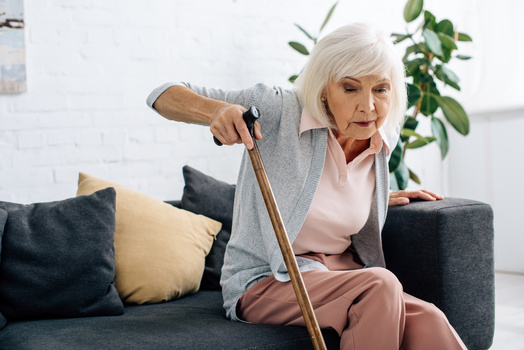As our loved ones age, ensuring their safety becomes a top priority. One of the areas that often gets overlooked is lawn care safety for elderly. While maintaining a beautiful lawn is important, it’s crucial to adopt safe practices that prevent accidents and injuries. This article will guide you through the necessary steps to ensure a safe environment for elderly individuals during lawn maintenance.

Understanding the Importance of Lawn Care Safety
Before diving into the specifics of lawn care safety for elderly, it’s essential to understand why it matters. Older adults may face various health challenges that make them more susceptible to accidents. Factors such as reduced mobility, balance issues, and diminished strength can increase the risk of falls or injuries during lawn maintenance tasks.
Recognizing Potential Hazards
Identifying potential hazards is the first step in creating a safe environment. Common hazards include uneven ground, sharp tools, and exposure to harsh weather conditions. By recognizing these risks, we can implement measures to mitigate them effectively.
Essential Lawn Care Safety Tips
1. Regular Health Check-ups
Encourage elderly individuals to have regular health check-ups. This helps in assessing their physical capabilities and identifying any limitations that may affect their ability to perform lawn care tasks safely.
2. Use Appropriate Lawn Equipment
Using the right lawn equipment can significantly reduce the risk of accidents. Opt for lightweight tools with ergonomic designs that are easy to handle. Additionally, consider investing in equipment with safety features such as automatic shut-off mechanisms.
3. Wear Proper Protective Gear
Wearing the right protective gear is crucial for lawn care safety for elderly. Encourage the use of gloves, sturdy shoes, and hats to protect against sun exposure. Additionally, safety goggles and hearing protection should be worn when using noisy equipment.
Creating a Safe Lawn Environment
4. Maintain a Clutter-Free Lawn
A clutter-free lawn reduces the risk of tripping and falling. Regularly remove debris, rocks, and other obstacles that may pose a hazard. Ensure pathways are clear and visible.
5. Install Adequate Lighting
Proper lighting is essential for maintaining safety, especially during early morning or late evening tasks. Install sufficient lighting in areas where lawn care activities take place to prevent accidents caused by poor visibility.
6. Ensure Proper Hydration
Staying hydrated is vital, especially when working outdoors. Encourage seniors to drink plenty of water and take regular breaks to avoid heat-related illnesses.
Adapting Lawn Care Practices for Seniors
7. Break Tasks into Manageable Segments
Breaking down tasks into smaller, manageable segments can prevent fatigue and reduce the risk of overexertion. Encourage elderly individuals to pace themselves and take breaks as needed.
8. Seek Assistance When Needed
Encourage seniors to seek assistance for tasks that may be physically demanding. Family members or professional services can provide the necessary support to ensure safety.
9. Utilize Technology for Assistance
Technology can play a vital role in enhancing lawn care safety for elderly. Consider using voice-activated devices or smart home systems to control outdoor lighting, sprinklers, and other lawn care equipment. For more information on technology for seniors, visit Voice-Activated Devices.
Additional Resources and Support
10. Home Renovation Tips
For a safer home environment, explore Home Renovation Tips that cater to the needs of the elderly. Simple modifications can make a significant difference in ensuring safety.
11. Safety Precautions for Outdoor Areas
Explore patio safety tips to ensure outdoor areas are secure and accessible. Visit Patio Safety for more insights.
12. Resources for Family Caregivers
Family caregivers play a crucial role in ensuring the safety and well-being of elderly individuals. Utilize resources and support networks to enhance caregiving practices.
FAQs on Lawn Care Safety for Elderly
Q1: What are the common risks involved in lawn care for the elderly?
A1: Common risks include falls, heat-related illnesses, and injuries from using lawn equipment. Ensuring proper safety measures can help mitigate these risks.
Q2: How can technology aid in lawn care safety?
A2: Technology can assist through smart home systems, voice-activated devices, and automated equipment, making tasks more manageable and reducing physical exertion.
Q3: Are there professional services available for lawn care assistance?
A3: Yes, many professional services offer lawn care assistance specifically tailored to the needs of elderly individuals, ensuring both safety and quality maintenance.

Conclusion
Ensuring lawn care safety for elderly individuals requires a comprehensive approach that considers physical limitations, potential hazards, and the use of appropriate equipment and technology. By adopting these practices, we can create a safe and enjoyable outdoor environment for our beloved seniors. For more tips on home safety, explore this infographic.
This article contains affiliate links. We may earn a commission at no extra cost to you.






